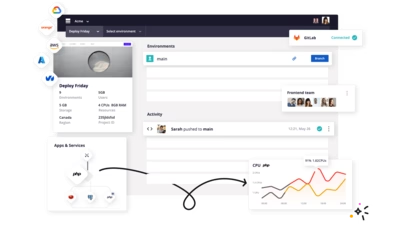
In-Space Missions: modern satellite communication
In-Space Missions are world class experts who design, build and operate physical and digital space missions for global customers from their UK site.

A client data portal to support many satellite missions
As a start-up company in the UK's New Space sector, with some of the best engineering talent in the industry, In-Space Missions are no strangers to innovation.
In-Space Missions needed a modern web application to handle their customer communication with their satellites.
The Customer Data Portal (CDP) is a novel piece of software developed by Pivale that takes an API-first approach. In-Space customers can use either the web-based user interface or a fully documented REST-based API using the OpenAPI standard. Either way, customers can send satellite control requests and receive responses from their satellite's activity. Once a control request is made, the CDP queues data messages to In-Space's downstream data systems for the scheduling of shared satellite resources. These systems, in turn, communicate back to the CDP with updates and resulting responses from the satellite payloads.

Innovating with agility and high security at centre stage
There was no software system was available that could handle the unique business rules and logic that In-Space wanted to achieve. In early 2019, we set about defining the baseline architecture of what the CDP needed to achieve. It was also clear early on that not all information could be known in advance. Therefore, Pivale and In-Space worked together in iterations to build and test our assumptions and make small pivots in the right direction.
The agile approach was second nature to the In-Space engineering team and it helped to create an initial proof-of-concept system that could be adapted to changing requirements. A key feature of the system was the high level of data security and strict access control. For a platform used by multiple customers, ensuring robust data modelling and policy-based access was paramount. To achieve this, Pivale implemented a comprehensive suite of access control tests that are automated with each build. This provides the perfect balance between allowing the system to adapt to changes over time and ensuring no regressions or potential data leaks can occur.
Andy SchofieldPrincipal Ground Systems EngineerIn-Space MissionsPivale have been excellent at working in partnership with us to design our customer facing frontend in an agile manner that has been shaped during the development and operational phase. They have helped identify the appropriate technologies at each stage and have provided a pragmatic, cost-effective solution that we have been able to build together to deliver value to our customers.
Move fast and never break things
The "move fast and break things" culture that was popularised by Facebook has proven to be the wrong model. This motto leads us to believe that in order to move fast, you have to break things. At Pivale, we've never believed that to be the case, and our work with In-Space Missions is a testament to that. In fact, automated testing has provided several benefits that have accelerated the pace of innovation. By always having a trusted suite of tests behind the core system API means we're able to make radical changes with confidence. Coupled with a solid CI/CD infrastructure provided by our partner platform.sh, the ability to test changes in secure staging environments is fast, cheap, and easy. Once changes have been verified by the team, it only takes a few minutes to roll them out.

To infinity and beyond
The CDP was launched prior to the In-Space Mission's first launch of the Faraday-1 satellite and was made available to customers for feedback and testing. Further enhancements have since been made to provide two-factor authentication, an API token system, data and user interface improvements, geo-location (TLE) information, and more.
We continue to support In-Space Missions with their evolving requirements for ongoing and future missions.

In-Space Missions' website is hosted on Platform.sh
In-Space Missions chose Platform.sh as their hosting partner due to their reputation for faster deployment workflows and security and compliance credentials.
Platform.sh are compliant with PCI Level 1, GDPR, HIPAA, SOC 2 - Type 2, WCAG 2.1 AA, TX-RAMP, CCPA, PIPEDA, APP, BDSG, and FERPA.

